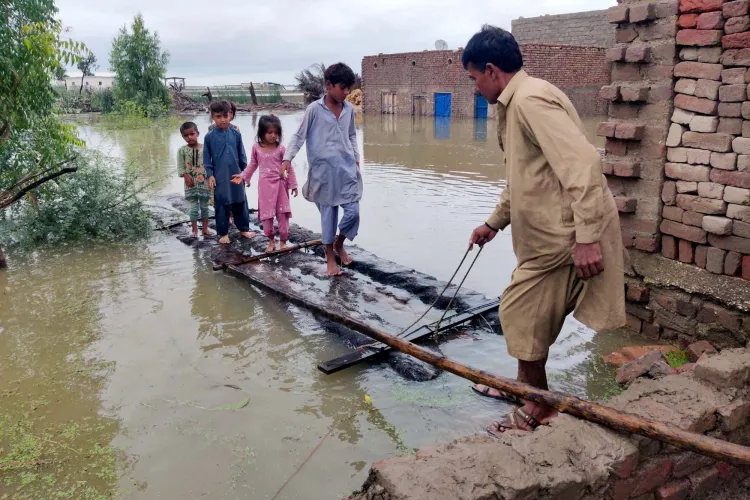What Are the Consequences of Heavy Rain and Flash Floods in Pakistan?

Synopsis
Key Takeaways
- Over 50 fatalities reported due to floods.
- Khyber Pakhtunkhwa is the most affected province.
- Urgent need for disaster management improvements.
- Severe damage to agricultural lands and homes.
- Calls for enhanced safety protocols in flood-prone regions.
Islamabad, July 1 (NationPress) More than 50 individuals have tragically lost their lives in Pakistan in recent days due to intense rainfall and subsequent flash floods. The province of Khyber Pakhtunkhwa has suffered the most, with a reported death toll of 21, including 10 children, according to local media on Tuesday.
In Balochistan, severe rainfall has caused significant destruction across various districts such as Lasbela, Hub, Barkhan, Zhob, Harnai, and Dera Bugti. Over the past two days, five people have died and six others have sustained injuries, primarily due to being swept away by floodwaters and drowning incidents.
Local reports indicate that a family of four—comprising three women and a child—was tragically killed after being overtaken by flash floods in Zhob.
In the wake of this calamity, residents are urging for robust disaster management systems, early warning systems, and stringent tourism safety measures, especially in remote and flood-vulnerable regions like Zhob.
The Provincial Disaster Management Authority (PDMA) has also noted extensive damage in Balochistan, with agricultural fields and homes suffering severe impacts from the monsoon rains. Reports mention the collapse of 10 houses in Khuzdar and two structures, including a school, in Ziarat.
Furthermore, heavy rains have caused partial damage to two bridges in the Quetta and Lasbela districts.
The Meteorological Department has projected a new wave of monsoon rains starting from July 4, with expectations for rainfall to be above the seasonal average.
Pakistan’s National Emergencies Operation Centre (NEOC) has released multiple impact-based weather alerts, forecasting widespread rain, wind, and thundershowers, along with isolated heavy downpours across various regions from Sunday to Saturday.
This situation could lead to urban flooding in low-lying areas of Central Khyber Pakhtunkhwa, particularly in cities like Peshawar, Charsadda, Nowshera, and Kohat.
Additionally, in southern Sindh, forecasts predict heavy to very heavy rainfall that may affect areas such as Hyderabad, Badin, Thatta, and Karachi from June 29 to July 5.
According to local authorities in Swat, flash floods have left 73 individuals stranded in various locations throughout Khyber Pakhtunkhwa.
Authorities confirmed that 17 out of a group of 18 tourists tragically perished after being swept away by flash floods in the Swat River on Friday.
This tragic event took place in the Fizagat area, where two families were having breakfast near the riverbank when a sudden surge in water levels swept many of them away, as reported by local media. The victims hailed from the provinces of Punjab and Khyber Pakhtunkhwa.









